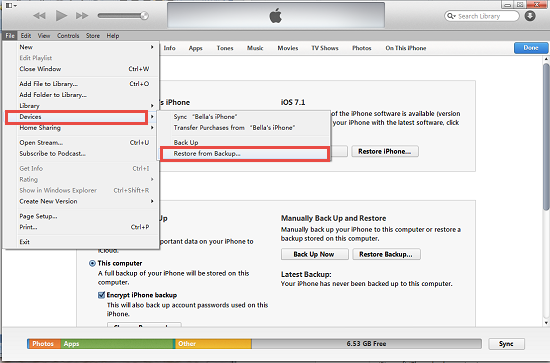How Do I Access My Backup From Icloud
Apple For many an iPhone or iPad user accustomed to syncing their devices to their desktops or laptops, the 2011 arrival of Apple's iCloud service created no small amount of head-scratching. No more syncing? ICloud backs up everything or just some things? What about photos? And do apps like Facebook really need to be backed up to the cloud? Then, a few months ago, Apple took the wraps off, a service that seemed to offer more bang for your storage buck.
But is it a replacement for iCloud Backup? An extension of it? A totally separate entity? If you upgrade your storage plan, does that also give you more space for backups? It's all pretty confusing. So let's take a look at which service does what, with an eye toward what options to consider for whole-device backup. What is iCloud?
To enable iCloud Backup, you can either select the option from the settings for your iOS device in iTunes when it is connected, or you can do it from the. Encrypting the backup will protect it from unauthorized access and ensure that nobody else will be able to restore your apps and data to a different iOS. In this example, taken from my iPhone 6 Plus, iCloud Drive is off -- yet I paid for an upgraded storage plan when iCloud Drive was announced. Same way as, say, Dropbox or OneDrive, in that you can't access (or organize) your collection of files via a Finder-like app -- not on your mobile devices, anyway. What iCloud Does and How to Access it From Windows. This is essential if you want to have a local back up of your photos. Which you can access at icloud.com.
Sep 01, 2017 You would have to restore the backup. You can't restore individual items.


A big, muddled mess, that's what. I base this assessment on my own confusion and the confusion of countless people who have asked me to explain it to them. ICloud is, of course, Apple's online storage service, but it's not a file-sharing service like Dropbox or Microsoft OneDrive.
(That's where iCloud Drive comes in; see below.) Rather, it serves to back up much (but not all) of what's stored on your iDevice, while syncing some (but not all) of your data to other devices. Indeed, venture into Settings >iCloud and you'll find more questions than answers: So if iCloud Drive is off, are my documents being backed up? Screenshot by Rick Broida/CNET In this example, taken from my iPhone 6 Plus, iCloud Drive is off -- yet I paid for an upgraded storage plan when iCloud Drive was announced.
Seems an odd disconnect. Meanwhile, Photos is set to 'On,' but where exactly are my backed-up photos located? Mail, Contacts, and a few other core apps are 'enabled,' but what does that even mean? Like I said: confusing. Free Download Program Capteurs Chimiques Pdf Creator. Then there's Backup.
When you enable that, your device will archive things such as purchase history, device settings, app data (but not apps?), iMessage and text messages, and voicemail. Photos and videos?
Yes, unless you've enabled the iCloud Photo Library beta, which already stores your photos and videos in iCloud. But what's this about 'purchase history'? According to Apple, 'Your iCloud backup includes information about the content you have purchased, but not the purchased content itself.'
Movies, music, books, and the like are automatically downloaded back to your device if you restore a backup. All those MP3s you ripped from your CDs, though? Or videos you copied from your PC? No dice: 'iCloud Backup doesn't back up music, movies, and TV shows that you didn't purchase from the iTunes Store, or any podcasts, audio books, or photos that you originally synced from your computer.' So even if you paid to upgrade your storage plan and enabled every backup option you could find within Settings, you might not be getting a full backup. Food for thought.